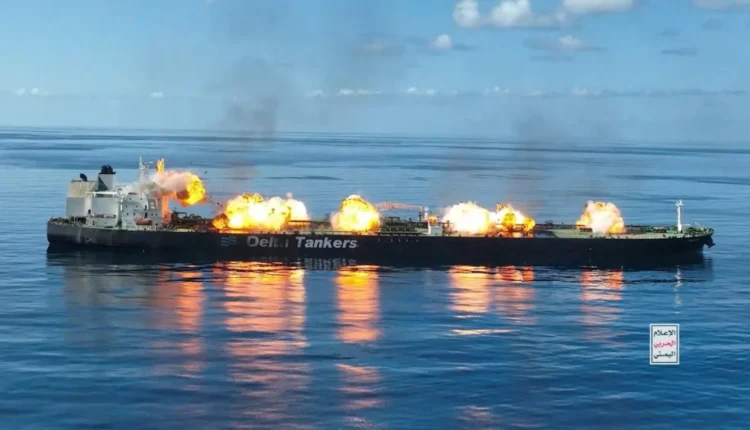What are the chances of the recent attack in the Gulf of Aden bringing naval confrontations back to the forefront?
Naval attacks in the Gulf are returning to the forefront once again, but this time, it is different from what the scene had grown accustomed to over the past two years, as Yemen has continued to push to stop the crimes of genocide and end the starvation in Gaza.
So, will the recent attack lead to new naval confrontations, especially in light of the Israeli implication of standing behind it, or will it recreate the “shadow wars” scenario?
Exclusive – Al-Khabar Al-Yemeni:
Although Yemen, according to international reports and confirmed by officials who spoke about monitoring the implementation of the ceasefire, halted naval operations—whose cessation it had always linked to stopping the war and siege on Gaza—a new attack occurred in the Gulf of Aden, 60 nautical miles from the southern coasts of Yemen, which are under the control of the Emirati-Saudi coalition previously and the British-American coalition currently.
The new attack appears to be entirely different from what the scene had been accustomed to, and reports indicated that it was carried out using a limpet mine, a method the Israeli occupation has excelled in implementing in recent years within the context of its war with Iran.
The result of this was a mutual targeting of dozens of ships. This time, however, the ship was not heading to the ports of the occupation, nor was it on the Yemeni sanctions list; rather, it was heading to Djibouti, amid American and Western claims that it was carrying a gas shipment for Yemen, in addition to being classified on the American sanctions list.
If the news is true that the shipment was for Yemeni citizens, the Yemeni response could be harsh, especially amidst warnings against any schemes that exacerbate the crisis of the Yemeni people and target their livelihood or what the new and old coalition has left for them.
This might perhaps lead to a return of naval escalation. For even if it was not heading to Yemen, an attack this close to Yemen and within its maritime domain, even if under the control of factions loyal to the coalition, is an aggression against Yemen and an indicator that regional and international parties are moving to tighten the siege on it by targeting ships, after failing to close the main port in the west of the country, which has been subjected to dozens of American, British, and Israeli attacks.
Yemen is capable of resuming naval operations, which had exhausted the Israeli-American-British coalition and inflicted severe damage over the past months, and it is also capable of confronting aggressions in kind.
However, it is not yet clear whether the target was Yemen or other parties, especially in light of American attempts to link the ship to Iran, whether by claiming it was part of the “ghost fleet” for transporting Iranian oil or by promoting allegations that the ship was carrying an Iranian gas shipment from one of the ports. This also ignites the fuse of a new crisis in the region that could be broader than the Yemeni operations.
Although the full picture of what happened in the Gulf of Aden is not entirely clear yet, all indicators confirm that the region is heading towards a new escalation, especially in light of Israeli threats to expand the war regionally, if not as part of attempts to pressure for joining the settlement tracks led by America in the region, through which it aims to allow the occupation to exit with a semblance of dignity.

